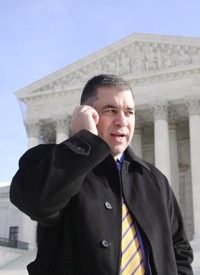
The November 22 New York Times editorial titled “Our Constitutional Court” included the surprising observation that the Supreme Court "… rewrite[s] the terms it uses to fulfill the constitutional mission of limiting each branch of government. Redefining itself as a constitutional court, this court seems limited only by limits it opts to recognize."
The Times was referring specifically to the Court’s landmark decision in the Citizens United case last January, in which it ruled that corporate funding of independent political broadcasts in candidate elections cannot be limited under the First Amendment. But the editorial also took on the broader issue of the Court’s overreach into the other branches of government, asserting:
The Citizens United ruling overturned precedent that the Court had previously twice affirmed, and the Court inserted itself where it had said it should be most restrained, according to the Times.
Indeed, a visit to the Constitution (Article III, Section 2) makes clear its definition of the Supreme Court’s jurisdiction. Article III establishes the Court and limits its jurisdiction to specific cases. The oft-ignored, yet defining concept in Section 2 gives Congress the ultimate power to regulate the Supreme Court:
The Supreme Court’s usurpation of powers not designated to it by the Constitution has been cause for concern for many Americans. The Times points to the Court’s overreach in decisions that have disregarded the intentional balance of power established among the three branches of government. The Constitution does not give the job of interpreting the Constitution to the Supreme Court.
Photo: Citizens United President David Bossie talks on his cell phone outside the Supreme Court in Washington, Jan. 21, 2010, after the Supreme Court ruled on a campaign finance reform case: AP Images



